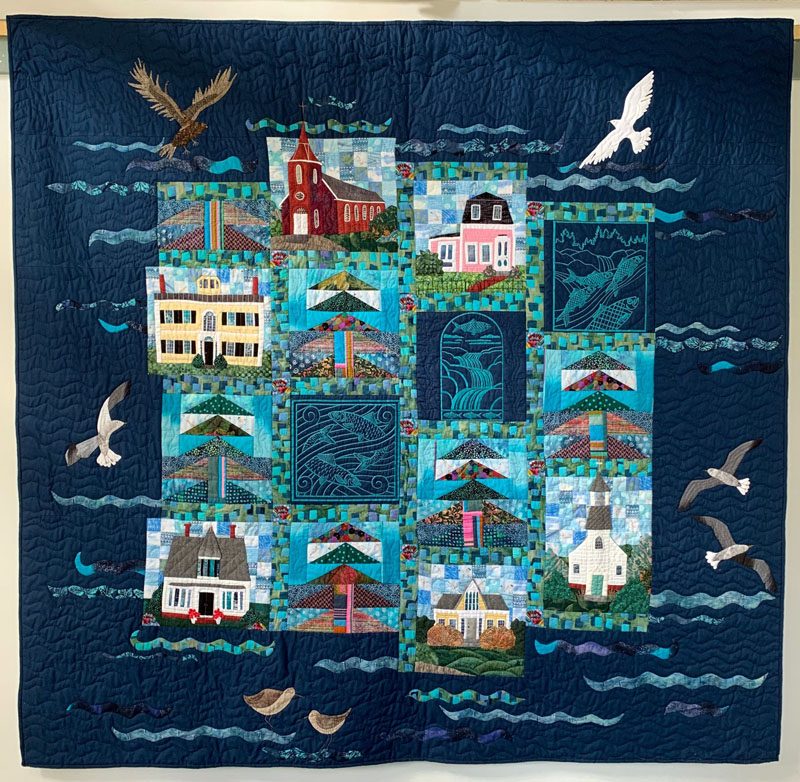
This quilt made by Betty Lu Brydges will be raffled off to support the fish ladder restoration efforts. (Courtesy photo)
Large individual schools of alewives are already gathering in the Gulf of Maine to make their yearly journey up the Damariscotta River. Their ultimate goal is to reach their spawning grounds in Damariscotta Lake when conditions are optimal for raising a new generation of alewives.
These optimal conditions usually occur in mid-May and that’s typically when the first alewives arrive. This timing is so precise, you can almost set your watch by it. Their predators have this calendar built into their life cycles, as well. It is no accident that eagles and ospreys time their egg-laying, chick hatching, and amazingly rapid growth of their offspring to coincide with the calendar dictated by the alewives.
In colonial times, dams were built harnessing the water power created by the outflow of lake water into the Damariscotta River. The dams powered the mills that were built in the area, giving the village its name. The dams also made access to the lake virtually impossible for the ancestors of today’s alewives.
Luckily, a few people realized that blocking access for the alewives caused real damage to the local environment. The story goes that people carried baskets of alewives around the dams to keep the life cycle of the fish going from year to year. Eventually a gradually rising “ladder” was constructed that enabled the fish to complete their journey. And people have been celebrating the return of the little fish ever since.
The modern-day fish ladder requires maintenance and upkeep and that requires MONEY. To raise this money over the years, Damariscotta Mills neighbors and friends have held festivals with music, food, alewife-themed apparel, quilt raffle … you get the idea. This year fundraising at the fish ladder will be limited to selling ice cream, hats and shirts and a few other items. The main fundraising event will be a raffle featuring a most spectacular quilt. A picture really is worth thousand words so look closely at this work of art in fabric. (To see if for yourself, visit Skidompha Library where it is currently on display.)
The artist who created this amazing quilt is Betty Lu Brydges. Betty Lu is not well known outside of quilting circles, where she is an acknowledged master quilt maker. Some 45 years ago, Betty Lu discovered the world of quilting. She had just given birth to her first daughter and for practical reasons decided to acquire a sewing machine. The machine and her own growing interest in quilting became a gateway into this whole new world.
Betty Lu is a self-taught quilt maker. Through books, videos, and classes, and lots of time, she learned each phase of the process of making a quilt. And now, with her years of experience, Betty Lu is the teacher, giving talks to quilting groups, conducting classes and seminars on every aspect of the process. All the while, she continues to make quilts. To date, she has completed more than 100 large quilts.
In years past, Betty Lu has created a number of wonderful handmade quilts that have been raffled off to support the fish ladder restoration. But this year’s quilt is in a class by itself. I think you’ll agree that this quilt, which took her six months to complete, is absolutely superb. Each block is a separate little quilt. Most of the blocks are designed by Betty Lu, with the exception of the fish blocks. Those blocks are designed by the artist John Whalley, another Damariscotta Mills resident. Just imagine, this work of art could be yours!
To purchase a raffle ticket, head over to the Skidompha Library. Tickets are $5 or $25 for six.
You can also find other purchase information/options at this link: damariscottamills.org/quilt-raffle.






